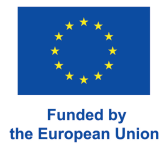Rethinking MEMORISE from the educator’s point of view
Spring at the Bergen-Belsen Memorial. A group of educators from the Herinneringscentrum Kamp Westerbork is currently visiting to learn about the former camp’s history and approaches to encounter the historical site. I joined them one day to talk to them and their colleagues from Bergen-Belsen about the educational possibilities of digital projects and applications.

Our discussion started with an open question: “What digital tools do educators need and want to use for their educational work?” The answer was surprising, because interestingly, everyone needed (almost) the same thing: access to a variety of annotated and enriched historical materials and sources that can be adapted to the specific needs of different learning groups, e.g. with reference to their specific places of origin or realities of life. This repository should help in the preparation of workshops and teaching units, and ideally the learners themselves should also be able to do research here. And in any case, presentation and editing tools should already be integrated, allowing sources to be quickly and easily compiled, annotated, curated and made accessible in presentations, online exhibitions or short videos.
The tools developed so far in the MEMORISE project do not quite meet these expectations. So far, they have illustrated different approaches to historical sources and materials and are intended to encourage people to engage with the heritage of Nazi persecution. However, they do meet some of the requirements that the participants had for digital applications. At best, those should be “explorable” and encourage and enable individual research. They should adapt methods of storytelling in order to learn about history, biographies and historical places. They should enable connections to historical sites and museums and complement existing analogue approaches.

And then there was something else: digital applications should help people to gain individual experiences and become active in doing memory themselves. It was emphasized several times that these experiences are what make learning about history sustainable. In this context, one could also think about the possibilities of co-creation. The participants referred to this as “educuration”: users learn by putting together and telling stories themselves.
According to the educators, access via personal stories, references to historical places, the utilization of historical objects and multi-perspectivity are particularly important for successful digital applications in educational settings. Quests and quizzes were cited as possible methods. However, applications should also reflect ethical boundaries. And they should offer the possibility of further development and reuse. In their view, the key prerequisites for this are sufficient internet connections, easy access, e.g. online or on private mobile devices, intuitive use, regular updates and consideration of the participants’ digital habits.
The first applications and project sketches developed in the MEMORISE project were also presented during the workshop and evaluated and discussed by the educators. While the mobile and distant learning experience based on prisoner diaries was praised for its focus on a specific type of source, it was repeatedly emphasized that the applications only deal with individual aspects of the history of Nazi persecution, while others remain unconsidered. Contextualizing information is particularly important, especially with regard to the specific history of the respective historical sites. The question of the inclusion of perpetrators’ perspectives was also raised.
The usability of 3D models of the historical camp architectures was particularly emphasized, which can help to orient visitors and provide in-depth information. Transparency is important, for example in the use of matching tools or with regard to the design of the 3D models. Sliders could make different layers of information (e.g. in terms of colouring) comprehensible or help to identify different time levels.

An interesting idea arose during the discussion of the 3D model of the exhibition at the Bernburg euthanasia memorial. On the one hand, the participants suggested integrating 3D photography, which is becoming increasingly accessible, into educational work as a participatory, creative tool. Secondly, using the example of a possible 3D model of the commandant’s villa in Westerbork, which is inaccessible to visitors, learners could be asked to fill the empty virtual house themselves with a digital 3D exhibition, arrange sources and curate the historical space.
The combination of sources, the connection to the historical sites, the juxtaposition of perspectives and historical contextualization were highlighted as particularly important by the workshop participants. In addition, digital applications should encourage creative engagement with history and, where possible, enable collaboration with others. Exploring a virtual space alone with VR goggles does not really correspond to the idea of actively engaging with the legacy of Nazi persecution.
Author: Tobias Ebbrecht-Hartmann



No responses yet